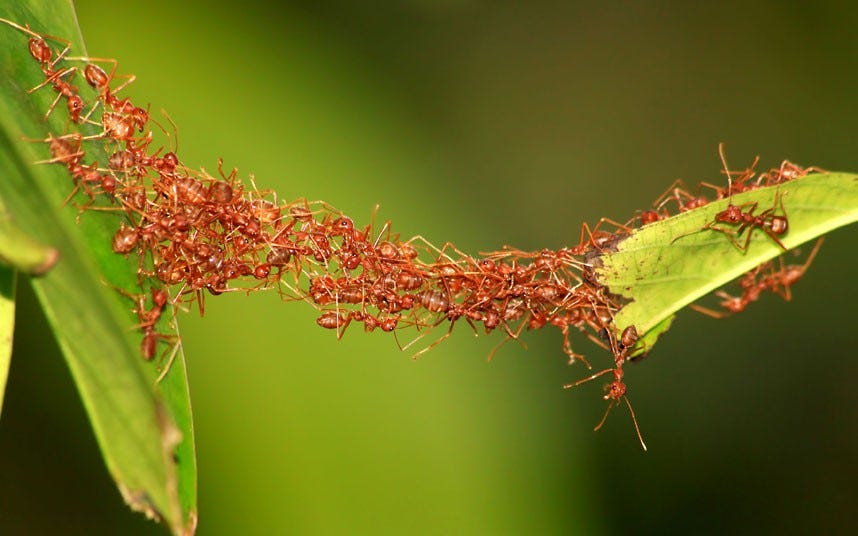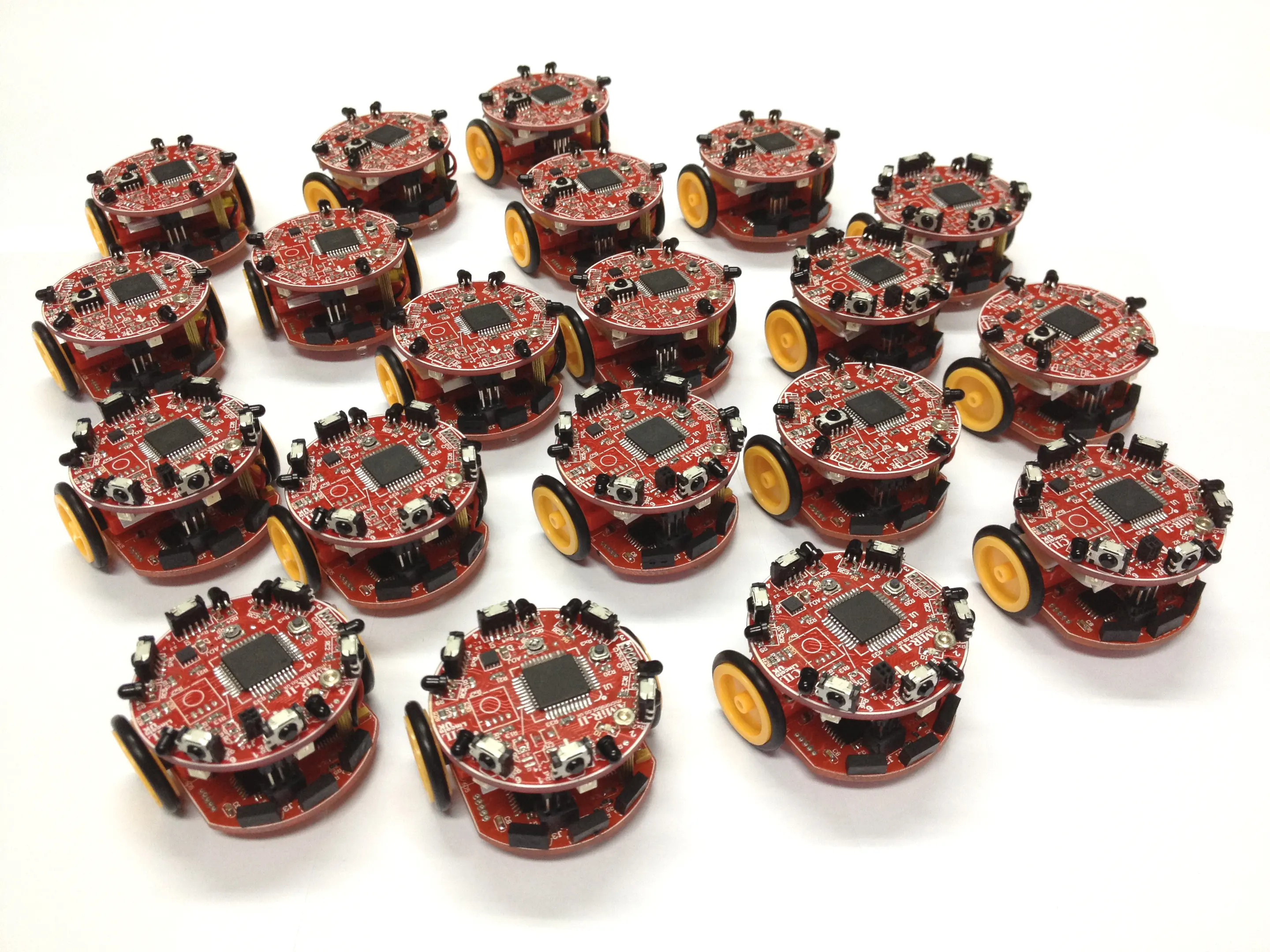So, what is swarm robotics?
Swarm robotics is a design principle for building robots born from nature! Swarms use a concept called emergent behaviour to achieve their goals. Emergent behaviour is a phenomenon that arises through the interactions of many individuals in the swarm, facilitating behaviour greater than the sum of its parts. Many small interactions produce behaviour of a higher order when viewed on the scale of the swarm.
This design principle is attractive because it allows for relatively simple robots to achieve complex goals when cooperating with many fellow robots. Thus, it allows for cheap, robust, dynamic swarms that can be suited for a wide range of tasks. The flexibility promoted by this approach opens the door for swarms to do many tasks otherwise considered impossible.
How does this relate to nature?
Think of a colony species… ants. Would you consider an individual ant to be capable of impressive feats? Probably not. A single ant is not very smart when compared with us humans. But when it is working with the rest of its colony, performing tasks of maintenance, food gathering, and protection, it contributes to behaviour that would be impossible for oneself. (One ant alone would not bridge the leaves shown below). This is the same for swarm robotics.

Why use swarms?
You might be thinking, what use cases do swarms provide that larger, more complex, singular robots cannot? This is a valid question, after all, you would have no problem pulling those leaves together to bridge them. The real beauty of swarm robotics arises when dynamism is considered. If one ant dies, its not such a big deal to the colony, they can just replace it with another of their many workers. But if you die? Yeah… you aren't as replaceable.
The same is true for complex, monolithic robots. They are expensive and time-consuming to build. Individually, they hold a lot of value; losses are not tolerated well. Swarm robotics instead transfers the value to the overarching swarm, not the individual. This guarantees a robustness impossible for typical robotics principles. Swarms can be engineered to have a low cost of production, both financially and temporally. A low individual value guarantees a high tolerance for failures.

Furthermore, think of all the places an ant can reach that you cannot. You would probably have a hard time living inside an ant nest. This idea opens up one of the most beneficial currently researched use cases of swarm robotics…
What can we use swarms for?
Objectively, one of the most valuable usages for swarm robotics is in the healthcare system. Typically, surgeries would be conducted by a human (or a human controlling a surgery machine as of recently), which leaves much room for collateral damage. Not to mention, scarring is inevitable from invasive procedures. Even more importantly, there are many places we cannot conduct surgery manually. Swarm robotics provides an alternative to this.
Like the ant inside its nest, nanorobotic swarms have the potential to navigate through the transport vessels of your body, reaching areas of importance non-invasively. Research into the usage of such swarms to fight cancer and other illnesses is growing rapidly.
Final Notes
Swarm robotics is both interesting to learn about, and promising in practice. Whilst this design principle is still new when compared with other, more mature robotics disciplines, its prospects in the medical industry are profound. Swarm robotics can be used in many more scenarios than those discussed in this article! It even has uses in video games, such as to generate natural crowd behaviour and realistic bird flocks! I urge you to consider doing your own research and learn more!
Also, yes I am biased because my dissertation project was in swarm robotics :).